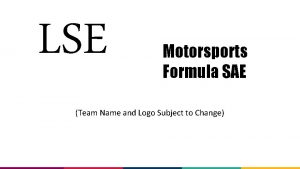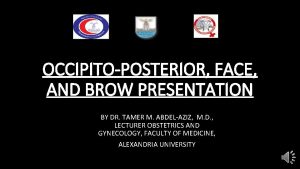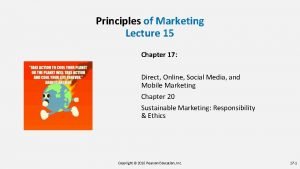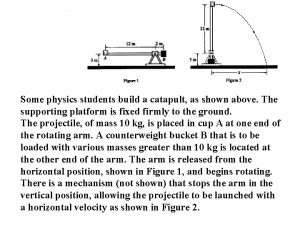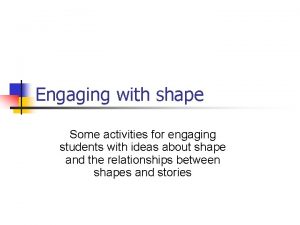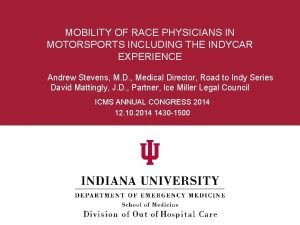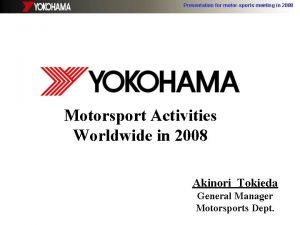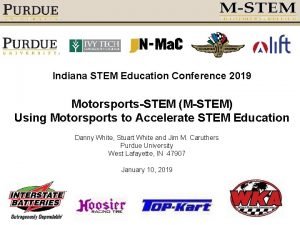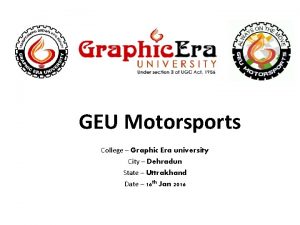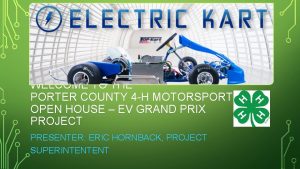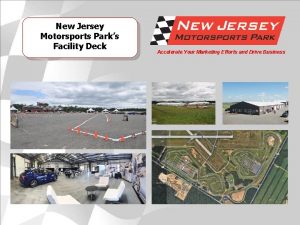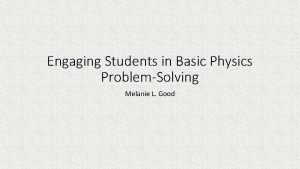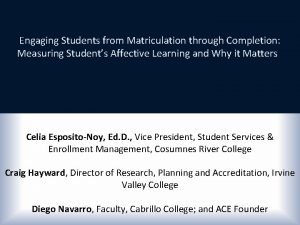ENGAGING STUDENTS WITH THE PHYSICS OF MOTORSPORTS Outline








![BGSU Physics and Astronomy Quantum Racing 1 -D motion [straights] • Theory: • Application: BGSU Physics and Astronomy Quantum Racing 1 -D motion [straights] • Theory: • Application:](https://slidetodoc.com/presentation_image_h/1e71c33cd5103b9acd1e00061765d39e/image-9.jpg)




![BGSU Physics and Astronomy Quantum Racing 2 -D motion [corners] • Theory: • Application: BGSU Physics and Astronomy Quantum Racing 2 -D motion [corners] • Theory: • Application:](https://slidetodoc.com/presentation_image_h/1e71c33cd5103b9acd1e00061765d39e/image-14.jpg)











- Slides: 25

ENGAGING STUDENTS WITH THE PHYSICS OF MOTORSPORTS

Outline • Introduction – What is Quantum Racing? – Teaching physics through racing • Physics of Racing – 1 -D motion – 2 -D motion – experiments • Classroom Activities – Turn Radius – Gear Ratio – Rolling Friction

• Part of the Society of Physics Student in the Department of Physics and Astronomy. • Formed to participate in the Grand Prix of BGSU (2 nd annual held April 14 th, 2007) Viewed as an exciting way to learn physics in many different capacities.

What can racing bring to physics? Racing can be an effective and exciting tool in physics education. A Champ Car produces enough downforce at race speeds that it could drive upside down on the ceiling. A Top Fuel Dragster accelerates from 0 -335 mph in under 4. 4 seconds pulling almost 5 g’s.

The Physics of Racing • Kinematics – Position/velocity/acceler ation relations – F=ma – 1 -D/2 -D motion – Rotational motion – Torque – Energy/work – Conservation of energy – Collisions – Linear/Angular Momentum – Elasticity – Fluids/pressure • Thermodynamics – Ideal gas law – P-V diagrams – Entropy • Structural Mechanics – Beam flexure – Center of Mass – Weight Transfer

Undergraduate Research • Two Parts – Day to day working involved with the kart – Individual Projects

The Physics of Racing

BGSU Physics and Astronomy Quantum Racing “The turn right before the longest straight is the most important” WHY?
![BGSU Physics and Astronomy Quantum Racing 1 D motion straights Theory Application BGSU Physics and Astronomy Quantum Racing 1 -D motion [straights] • Theory: • Application:](https://slidetodoc.com/presentation_image_h/1e71c33cd5103b9acd1e00061765d39e/image-9.jpg)
BGSU Physics and Astronomy Quantum Racing 1 -D motion [straights] • Theory: • Application: Being slightly faster into a straight will end in a larger advantage at the end.

BGSU Physics and Astronomy Quantum Racing

BGSU Physics and Astronomy Quantum Racing

BGSU Physics and Astronomy Quantum Racing What does that mean on the track? The time difference for between a car entering at 28 vs 30 mph is: 0. 1182 s for 73 feet 0. 06 s for 40 feet That means a 5. 89 foot advantage for the 73 foot straight -about a kart length and a 3. 06 foot advantage for the 40 foot straight -about half a kart length

BGSU Physics and Astronomy Quantum Racing What is the fastest way to get through a corner?
![BGSU Physics and Astronomy Quantum Racing 2 D motion corners Theory Application BGSU Physics and Astronomy Quantum Racing 2 -D motion [corners] • Theory: • Application:](https://slidetodoc.com/presentation_image_h/1e71c33cd5103b9acd1e00061765d39e/image-14.jpg)
BGSU Physics and Astronomy Quantum Racing 2 -D motion [corners] • Theory: • Application: Taking the line with the largest radius, will be the fastest

BGSU Physics and Astronomy Racing Lines • Racing lines refers to the variations of paths that a driver can take through a corner. Quantum Racing

BGSU Physics and Astronomy Quantum Racing Variations in speed… Obviously the different lines have a difference in radii, and therefore allowed speeds for a given setup. Corner : 75 ft radius at centerline 30 foot track width Line Radii/max velocity (1. 1 g turn): effective red line – 63 feet/32. 16 mph effective green line – 87 feet/37. 79 mph effective blue line – 145 feet/48. 78 mph Calculations taken from Brian Beckman’s “Physics of Racing”

BGSU Physics and Astronomy Quantum Racing …lead to a variation in time • The allowed speed leads directly to fastest times for the different lines. Calculations taken from Brian Beckman’s “Physics of Racing”

BGSU Physics and Astronomy Quantum Racing …track width is also a factor • The track width effects the allowed velocities… Calculations taken from Brian Beckman’s “Physics of Racing”

BGSU Physics and Astronomy Quantum Racing Calculations are great… …but what about the real world?

BGSU Physics and Astronomy • Alfano – Records: RPM Head Temp Wheel Speed G-force Lap times – 10 hz ~90 min Quantum Racing Data Acquisition (DAQ)

BGSU Physics and Astronomy Quantum Racing

BGSU Physics and Astronomy Quantum Racing 1 -D experiment • Measure both starting and ending velocities as well as the acceleration and distance. IR beacon #2 IR beacon #1 Known distance -show relationship and measure μs

BGSU Physics and Astronomy Quantum Racing

BGSU Physics and Astronomy Quantum Racing 2 -D experiment • Measure known radius, acceleration, and speed r -show relationship and measure μc

 Sae lse
Sae lse Engaging diameter in occipito posterior
Engaging diameter in occipito posterior Dynamisch verbinden
Dynamisch verbinden Marketing involve engaging directly with carefully targeted
Marketing involve engaging directly with carefully targeted Marketing involve engaging directly with carefully targeted
Marketing involve engaging directly with carefully targeted Dr. miguel morayta
Dr. miguel morayta Quote sandwich paragraph example
Quote sandwich paragraph example Some physics students build a catapult
Some physics students build a catapult Why does it happen
Why does it happen University physics with modern physics fifteenth edition
University physics with modern physics fifteenth edition Ia examples physics
Ia examples physics Hát kết hợp bộ gõ cơ thể
Hát kết hợp bộ gõ cơ thể Frameset trong html5
Frameset trong html5 Bổ thể
Bổ thể Tỉ lệ cơ thể trẻ em
Tỉ lệ cơ thể trẻ em Gấu đi như thế nào
Gấu đi như thế nào Thang điểm glasgow
Thang điểm glasgow Chúa sống lại
Chúa sống lại Môn thể thao bắt đầu bằng từ đua
Môn thể thao bắt đầu bằng từ đua Thế nào là hệ số cao nhất
Thế nào là hệ số cao nhất Các châu lục và đại dương trên thế giới
Các châu lục và đại dương trên thế giới Công thức tiính động năng
Công thức tiính động năng Trời xanh đây là của chúng ta thể thơ
Trời xanh đây là của chúng ta thể thơ Mật thư tọa độ 5x5
Mật thư tọa độ 5x5 101012 bằng
101012 bằng Phản ứng thế ankan
Phản ứng thế ankan
